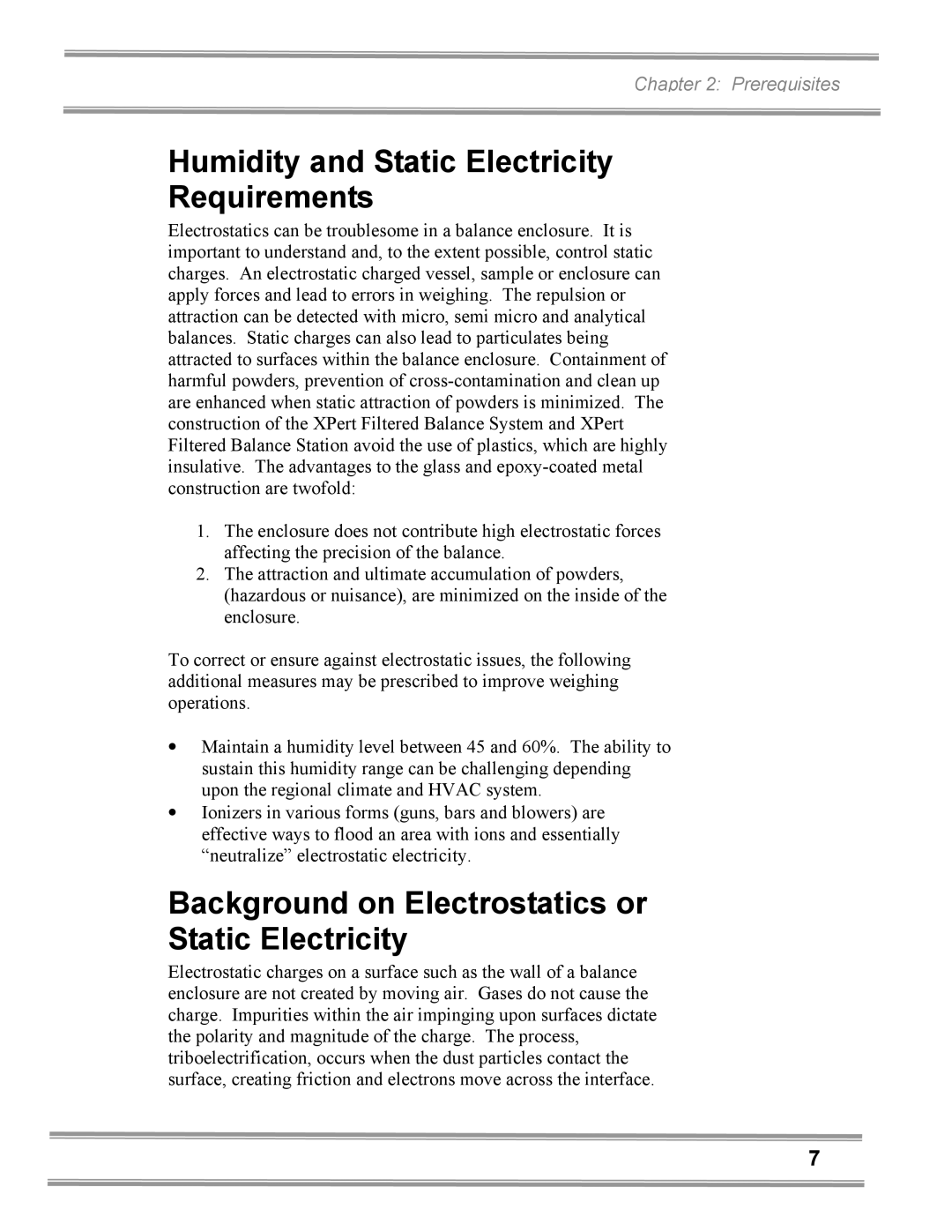
Chapter 2: Prerequisites
Humidity and Static Electricity
Requirements
Electrostatics can be troublesome in a balance enclosure. It is important to understand and, to the extent possible, control static charges. An electrostatic charged vessel, sample or enclosure can apply forces and lead to errors in weighing. The repulsion or attraction can be detected with micro, semi micro and analytical balances. Static charges can also lead to particulates being attracted to surfaces within the balance enclosure. Containment of harmful powders, prevention of
1.The enclosure does not contribute high electrostatic forces affecting the precision of the balance.
2.The attraction and ultimate accumulation of powders, (hazardous or nuisance), are minimized on the inside of the enclosure.
To correct or ensure against electrostatic issues, the following additional measures may be prescribed to improve weighing operations.
•Maintain a humidity level between 45 and 60%. The ability to sustain this humidity range can be challenging depending upon the regional climate and HVAC system.
•Ionizers in various forms (guns, bars and blowers) are effective ways to flood an area with ions and essentially “neutralize” electrostatic electricity.
Background on Electrostatics or
Static Electricity
Electrostatic charges on a surface such as the wall of a balance enclosure are not created by moving air. Gases do not cause the charge. Impurities within the air impinging upon surfaces dictate the polarity and magnitude of the charge. The process, triboelectrification, occurs when the dust particles contact the surface, creating friction and electrons move across the interface.
7
